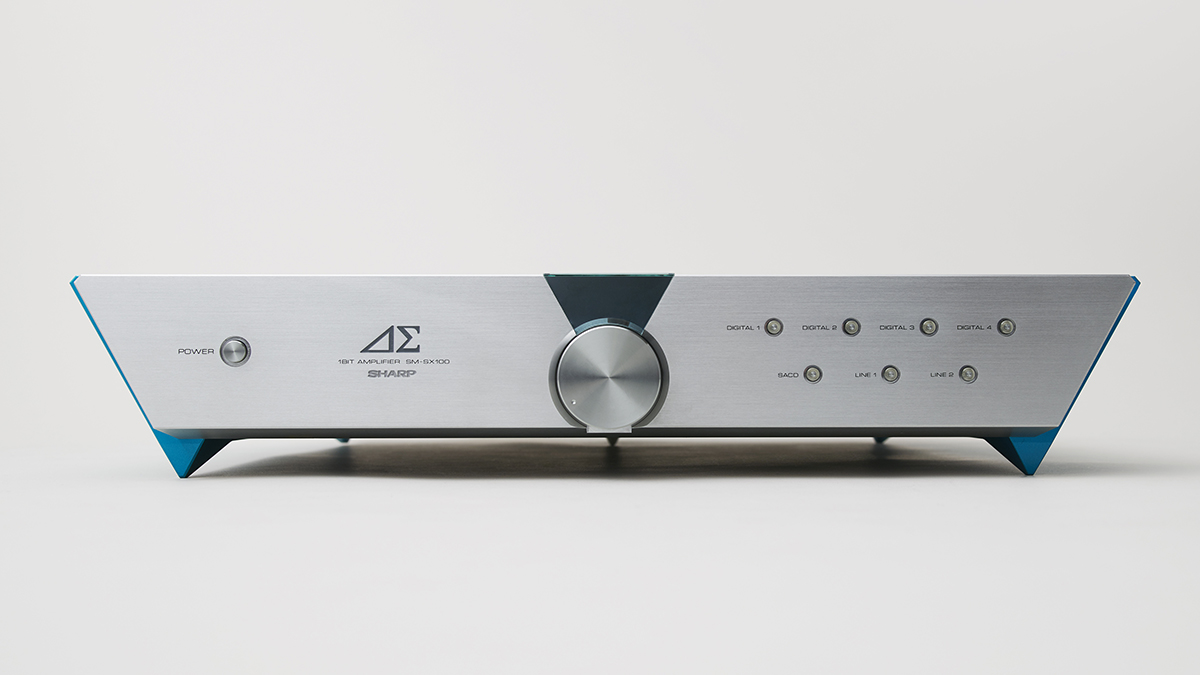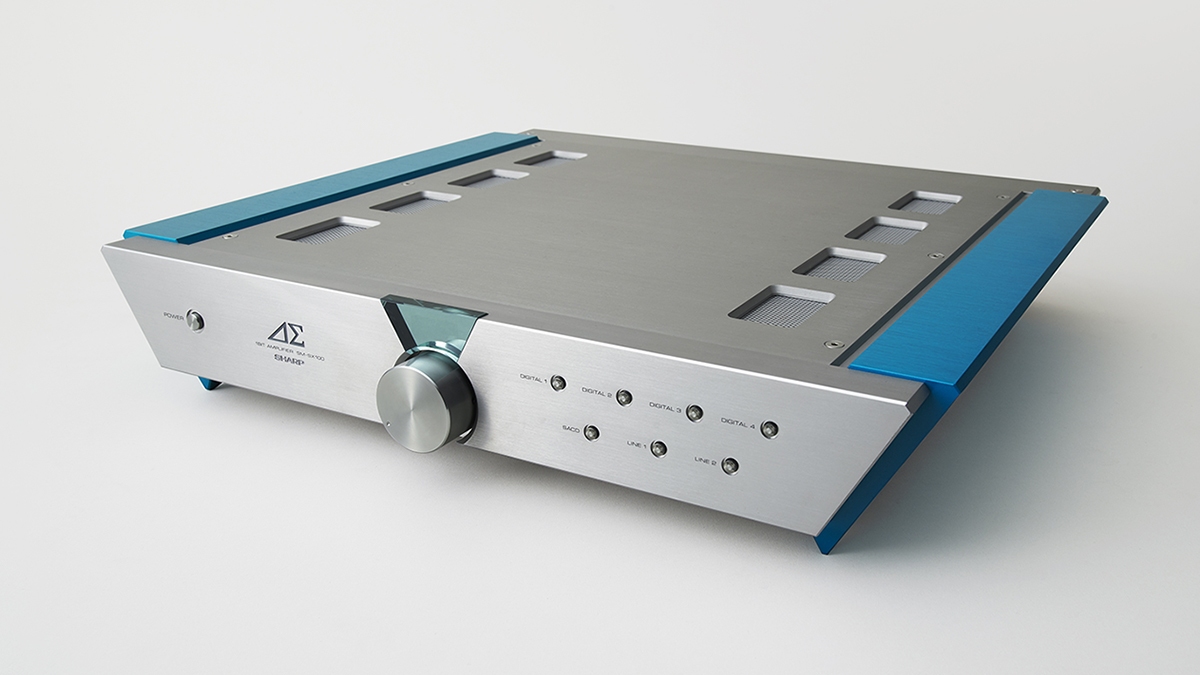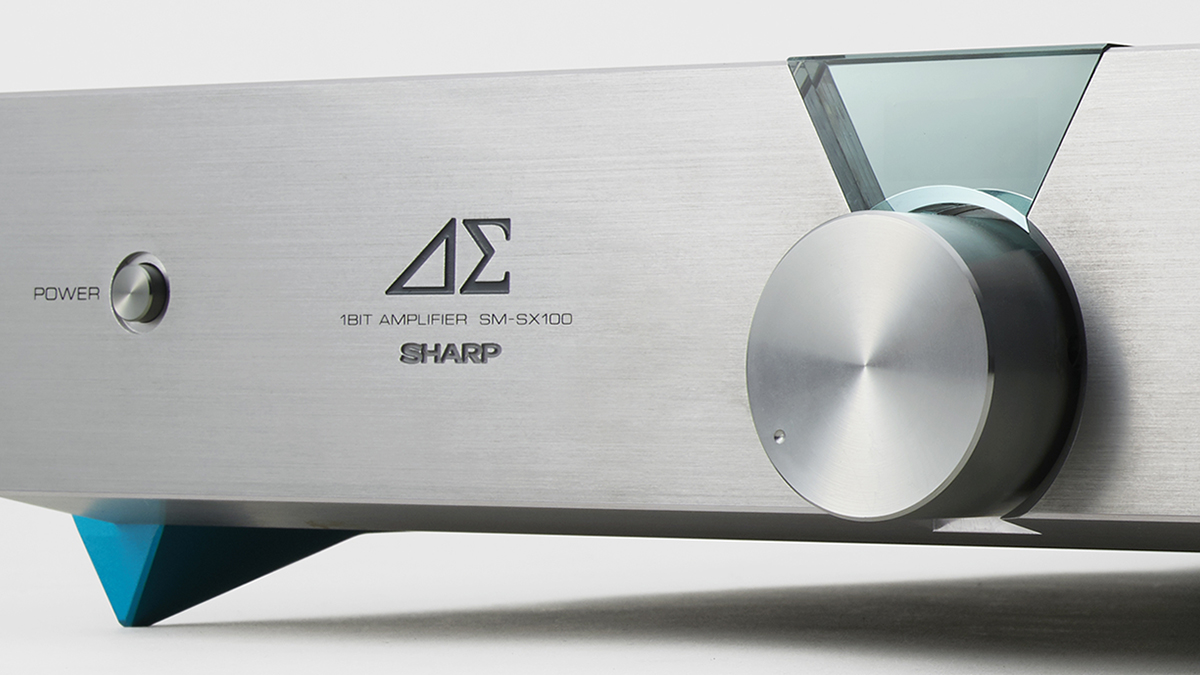IN HISTORY
1999 1bit Amplifier
“IN HISTORY”: The history of Sharp and design – A joint project with Sharp Technology Innovation Museum commemorating its 40th anniversary
Hello, my name is Fujiwara, and I am from the Sharp Technology Innovation Museum. This is a series in which Sharp Museum guides myself and Nakatani talk about Sharp products and history. I hope this will be an opportunity for you to get you interested in Sharp’s history.
This story is about the 1bit Amplifier SM-SX100, released in 1999.

Surprising focus on 1-bit technology
Born in 1999, the 1bit Amplifier, which is a Sharp-original high-end amplifier utilizing completely new technology and design, appeared in the world of high-end audio amplifiers in which amplifiers that looked like a heavy metal box were the mainstream.
The 1-bit technology used in this amplifier was the Sharp’s original groundbreaking technology that made it possible to reproduce sound using the delta-sigma modulation principle, which had been difficult. By measuring analog audio 2.8 million times per second and using a simple 1-bit method to record each signal as “1” if it is greater than the previous signal level and “0” if it is lower, even minute changes in sound are converted into digital signals like smooth curves. Thus, sound is reproduced in a delicate and natural manner as close to the original as possible, even though it is digitally processed.
Although that was a rather technical description of the technology, seeing is believing (or in this case, perhaps hearing is believing). Many people who visit the museum and hear the 1bit Amplifier demonstration are surprised, stating “How can such realistic sound be expressed digitally?” It is no wonder, then, that 1-bit technology can reproduce sound 64 times more finely than a CD.

A design that visually conveys good sound
The slim aluminum body with fine hairlines gives it a light, yet solid metallic feel, as if to echo the lightness of the “1-bit” name. The peacock green panel legs, which hold the body from both sides, have pointed tips like spikes to support the heavy 20 kg body at a small contact point to the ground, preventing vibration and resonance. The central volume knob made of machined aluminum also has a solid and indescribably reassuring feel when turned, conveying meticulous attention to detail.
The design, which looks and feels like it will produce quality sound, has a pure and dignified impression that still attracts me even now, 23 years after it was made. I feel the astonishing passion of the designers and engineers who worked on the 1-bit model at that time.

Meeting lovers of music
At the time of the introduction of the 1bit Amplifier, visitors to the museum, including people from overseas, were mainly business partners, investors, and researchers visiting Japan to attend academic conference. Pure audio (audio equipment that emphasizes high-quality sound, or the hobby of building such equipment) enthusiasts were not uncommon. I explained how the principle of 1bit Amplifier faithfully reproduces the original sound, and I witnessed many times how surprised and impressed the customers were when they actually heard the sound. One of the most-memorable visitors was a researcher who did not think it would be possible to reproduce sound based on the principle of delta-sigma modulation. The researcher was surprised and impressed to see that Sharp had been able to develop an amplifier using 1-bit technology based on such modulation. I will never forget the emotions I have experienced because of the 1bit Amplifier (SM-SX100).

1-bit technology disseminated to the world
1-bit technology, which can reproduce sound as close to the original as possible in spite of digital processing, has since been built into various devices that require high sound quality, such as compact audio equipment and information devices, because of its superior energy-saving capability and small size.
That’s all for now! Next time, we will introduce the transistor television.
[Sharp Museum: Commemorating its 40th anniversary in November 2021]
This is a series written by Sharp Technology Innovation Museum guides Fujiwara and Nakatani about Sharp products and history. We hope this will be an opportunity get you interested in Sharp’s history.